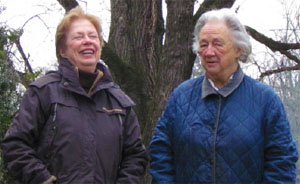RCCA was founded in 1999 as a 501(c)(3) not-for-profit organization focused on preserving open space and farmland in Rappahannock County. Its mission was to ensure that Rappahannock County remains a scenic, rural community by promoting conservation easements and farmland preservation.
PEC Conservation Funds
Land conservation funds managed by The Piedmont Environmental Council or Piedmont Foundation.
The Krebser Fund for Rappahannock County Conservation
The Krebser Fund for Rappahannock County Conservation (the “Krebser Fund”) is dedicated to protecting important conservation lands and supporting conservation projects in Rappahannock County, Virginia. The Krebser Fund is a land conservation fund managed by the Piedmont Foundation–a 509(a)(3) supporting organization established to hold and manage the funds of The Piedmont Environmental Council (PEC). Assisting with the establishment of conservation easements in Rappahannock County is one of the chief purposes of the Fund.

Forty Years of Conservation
Hope Porter and Sue Scheer have been fighting to protect rural land for decades. It was in the late 1940s that Porter and her husband realized what the post-war surge in automobile ownership and long-distance commuting could mean for Fauquier County, their home—unless people stood up to protect the countryside. Together with a few likeminded neighbors, they worked to establish the county’s first zoning, when any kind of land use planning was still a rarity.
Protecting the Cedar Run Watershed
When Mike and Margrete Stevens first came to Fauquier County eighteen years ago, as the new owners of Bonny Brook Farm, near Warrenton, they made friends with their neighbors Julian and Sue Scheer and Hilary and Rich Gerhardt (the Scheers’ daughter and son-in-law). This friendship with a family of dedicated conservationists led the Stevens to start hosting a wildflower walk on their land each April, as a sky-colored carpet of Virginia Bluebells blossoms along Cedar Run.
Cows, Not Condos
Bev McKay's family has been farming the land that he just protected in Clarke County for over 200 years. Mr. McKay raises dairy cattle on the property, as well as crops, such as corn and barley, to feed the cows.
The land is good for farming, with gently rolling fields and rich loam soils. Because of its value as productive farmland, the USDA and PEC worked together to purchase an easement on 103 acres, over half of which are prime agricultural soils.
Building Fences for Cleaner Streams
Farmers are using a unique incentive program coordinated by PEC to substantially expand water quality protections in our region. The program helps cover their costs for fencing livestock out of streams.

